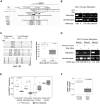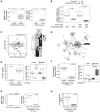GAD1 Upregulation Programs Aggressive Features of Cancer Cell Metabolism in the Brain Metastatic Microenvironment
- PMID: 28400476
- PMCID: PMC5461057
- DOI: 10.1158/0008-5472.CAN-16-2289
GAD1 Upregulation Programs Aggressive Features of Cancer Cell Metabolism in the Brain Metastatic Microenvironment
Abstract
The impact of altered amino acid metabolism on cancer progression is not fully understood. We hypothesized that a metabolic transcriptome shift during metastatic evolution is crucial for brain metastasis. Here, we report a powerful impact in this setting caused by epigenetic upregulation of glutamate decarboxylase 1 (GAD1), a regulator of the GABA neurotransmitter metabolic pathway. In cell-based culture and brain metastasis models, we found that downregulation of the DNA methyltransferase DNMT1 induced by the brain microenvironment-derived clusterin resulted in decreased GAD1 promoter methylation and subsequent upregulation of GAD1 expression in brain metastatic tumor cells. In a system to dynamically visualize cellular metabolic responses mediated by GAD1, we monitored the cytosolic NADH:NAD+ equilibrium in tumor cells. Reducing GAD1 in metastatic cells by primary glia cell coculture abolished the capacity of metastatic cells to utilize extracellular glutamine, leading to cytosolic accumulation of NADH and increased oxidative status. Similarly, genetic or pharmacologic disruption of the GABA metabolic pathway decreased the incidence of brain metastasis in vivo Taken together, our results show how epigenetic changes in GAD1 expression alter local glutamate metabolism in the brain metastatic microenvironment, contributing to a metabolic adaption that facilitates metastasis outgrowth in that setting. Cancer Res; 77(11); 2844-56. ©2017 AACR.
©2017 American Association for Cancer Research.
Figures







References
Publication types
MeSH terms
Substances
Grants and funding
LinkOut - more resources
Full Text Sources
Other Literature Sources
Medical
Research Materials

